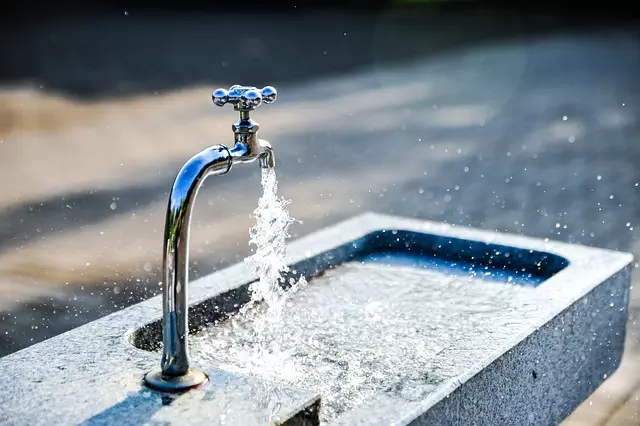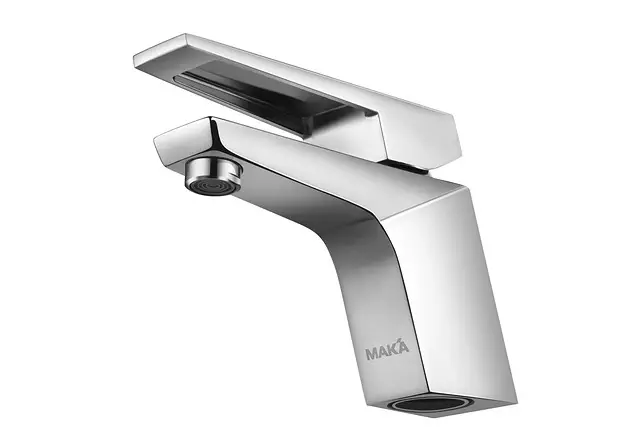Faucet leaks are common household issues caused by various factors like worn parts, temperature changes, or design flaws. Before attempting repairs, prepare a kit with essential tools and materials. Identify the leak source, turn off the water supply, and follow simple steps for basic repairs. For complex issues, call a professional plumber. Regular maintenance and prompt attention to wear and damage prevent future leaks. Replacing a leaky faucet with a compatible modern model is often the best long-term solution.
Tired of that persistent drip-drip-drip? Don’t worry, you’re not alone. Faucet leaks are among the most common household issues, but fixing them doesn’t have to be daunting. This comprehensive guide breaks down everything you need to know about faucet repair. From identifying root causes and gathering essential tools to step-by-step fix instructions, we’ve got you covered. Learn when it’s time to call a professional plumber and discover tips for preventing future leaks. Plus, find expert advice on choosing the right faucet replacement. Get ready to say goodbye to that annoying drip!
Understanding Common Faucet Leak Causes

Faucet leaks are a common household issue, often arising from various factors. Identifying the root cause is the first step in effective faucet repair. One of the primary reasons for leaks is worn-out or damaged O-rings and washers inside the faucet. Over time, these components can degenerate due to mineral buildup or general wear and tear, leading to leaks at the base or spout. Another frequent culprit is a loose connection between the faucet’s parts, particularly in areas subject to temperature changes. This can cause the connections to expand and contract, resulting in leaks.
Additionally, outdated or poorly designed faucets may have design flaws that contribute to leaks. The type of cartridge used in the faucet also plays a role; older cartridges might not seal properly, leading to water seepage. In some cases, leaks can occur due to damaged or incorrectly installed aerators, which regulate the flow and temperature of water. Recognizing these common causes enables homeowners to take proactive measures during faucet repair, ensuring a more efficient and effective solution.
Gather Tools and Materials for Repair

Before starting any faucet repair, ensure you have the necessary tools and materials on hand. This typically includes a wrench or pliers for unscrewing parts, Teflon tape or pipe compound for sealing threads, and possibly a new washer or O-ring if the leak is due to these components. Gather all these items to make the repair process smoother and more efficient.
For faucet repairs, having a set of adjustable wrenches, channel locks, or pipe wrenches is crucial. These tools will help you grip and turn tight connections securely. Additionally, prepare a bucket for cleaning and disposing of old parts. By gathering these essentials, you’re ready to tackle common faucet leaks head-on, whether it’s a dripping kitchen tap or a bathroom sink issue.
Steps to Fix a Leaking Faucet

A leaking faucet can be both frustrating and a waste of water, but fixing it is usually a straightforward process. Here’s how to tackle this common issue:
1. Identify the Source: Start by determining from where the leak originates. It could be the handle, the base of the spout, or the supply lines. This will help you pinpoint which parts need attention during the repair.
2. Turn Off the Water Supply: Before disassembling any components, shut off the water to stop the flow. Locate the shut-off valves under the sink and turn them clockwise to cut off the water. You can test this by turning on the faucet; if it doesn’t budge, your supply lines are disconnected.
When to Call a Professional Plumber

If you’ve tried basic faucet repair techniques, such as tightening the faucet handles or replacing the washer, and the leak persists, it’s time to consider calling a professional plumber. While minor faucet repairs can often be tackled by homeowners, complex issues like damaged pipes, faulty valve seats, or leaks at the base of the faucet usually require expert intervention. A skilled plumber has the tools and knowledge to diagnose and fix these problems effectively.
They can also prevent further damage to your plumbing system. Persistent leaks can lead to water waste and higher utility bills, so addressing them promptly is wise. Additionally, a professional will ensure that any repairs are done correctly, saving you from potential future issues like low water pressure or even pipe bursts.
Preventing Future Faucet Leaks

To prevent future faucet leaks, regular maintenance is key. Start by checking your faucets periodically for any signs of wear or damage, especially at the points where the handles meet the spout and the base connects to the plumbing. A simple visual inspection can help you catch issues early, allowing for quick faucet repair before a small leak becomes a big problem.
Consider lubricating the parts that move frequently, such as the handle and disk mechanisms, with a silicone-based lubricant. This can reduce friction and prevent the parts from wearing out over time. Additionally, ensuring that your faucets are properly tightened and all connections are secure will go a long way in preventing leaks. Regular faucet repair and maintenance not only extend their lifespan but also save you money on potential water damage and replacement costs.
Choosing the Right Faucet Replacement

When it comes to fixing a leaky faucet, one of the most effective solutions is often replacing the entire faucet. However, choosing the right replacement involves considering several factors. Firstly, ensure compatibility with your existing plumbing setup and water pressure. Different types of faucets have varying requirements, so measuring your current faucet’s dimensions and understanding your water system’s specifications are crucial steps.
Secondly, consider the material and finish options available. Modern faucets come in various materials like ceramic, brass, or stainless steel, each offering unique advantages in terms of durability, resistance to corrosion, and aesthetic appeal. Additionally, finishes such as chrome, brushed nickel, or matte black can complement different kitchen or bathroom themes, ensuring your replacement faucet seamlessly integrates with your space while also providing the necessary function for effective faucet repair.
